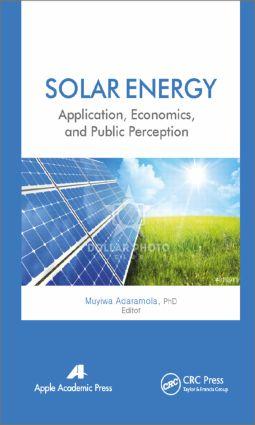
Zustellung: Fr, 06.06. - Do, 12.06.
Versand in 2 Wochen
VersandkostenfreiBestellen & in Filiale abholen:
This title includes a number of Open Access chapters.
Due to climate change, the rise in energy demand, and issues of energy security, more countries are being forced to reexamine their energy policies and consider more renewable sources of energy. Solar power is expected to play a significant role in the changing face of energy economies, due in a large part to technological advances in the field and the significant decrease in cost. This book describes these advances and examines the current state of solar power. The sections of the book cover the following topics: an overview of hybrid solar energy systems, solar energy and conservation, current solar energy technologies, the economics of solar power, and public perceptions of solar energy.
Due to climate change, the rise in energy demand, and issues of energy security, more countries are being forced to reexamine their energy policies and consider more renewable sources of energy. Solar power is expected to play a significant role in the changing face of energy economies, due in a large part to technological advances in the field and the significant decrease in cost. This book describes these advances and examines the current state of solar power. The sections of the book cover the following topics: an overview of hybrid solar energy systems, solar energy and conservation, current solar energy technologies, the economics of solar power, and public perceptions of solar energy.
Inhaltsverzeichnis
Introduction. Part I: Overview. Hybrid Solar: A Review on Photovoltaic and Thermal Power Integration. Part II: Solar Energy and Conservation. An Approach to Enhance the Conservation-Compatibility of Solar Energy Development. Part III: Solar Technology. Carbon Nanotube Solar Cells. Enabling Greater Penetration of Solar Power via the Use of CSP with Thermal Energy Storage. Viability of Grid-Connected Solar PV Energy System in Jos, Nigeria. Passive Cooling Technology for Photovoltaic Panels for Domestic Houses. Part IV: Solar Energy Economics. A Review of Solar Energy Markets, Economics and Policies. Economical Evaluation of Large-Scale Photovoltaic Systems Using Universal Generating Function Techniques. Simulating the Value of Concentrating Solar Power with Thermal Energy Storage in a Production Cost Model. The Place of Solar Power: An Economic Analysis of Concentrated and Distributed Solar Power. Part V: Public Perceptions of Solar Energy. Excerpt from: Community Response to Concentrating Solar Power in the San Luis Valley. The Promotion of Domestic Grid-Connected Photovoltaic Electricity Production Through Social Learning. Index.
Produktdetails
Erscheinungsdatum
24. Oktober 2014
Sprache
englisch
Seitenanzahl
416
Herausgegeben von
Muyiwa Adaramola
Verlag/Hersteller
Produktart
gebunden
Gewicht
699 g
Größe (L/B/H)
229/157/28 mm
ISBN
9781771880909
Entdecken Sie mehr
Bewertungen
0 Bewertungen
Es wurden noch keine Bewertungen abgegeben. Schreiben Sie die erste Bewertung zu "Solar Energy" und helfen Sie damit anderen bei der Kaufentscheidung.










